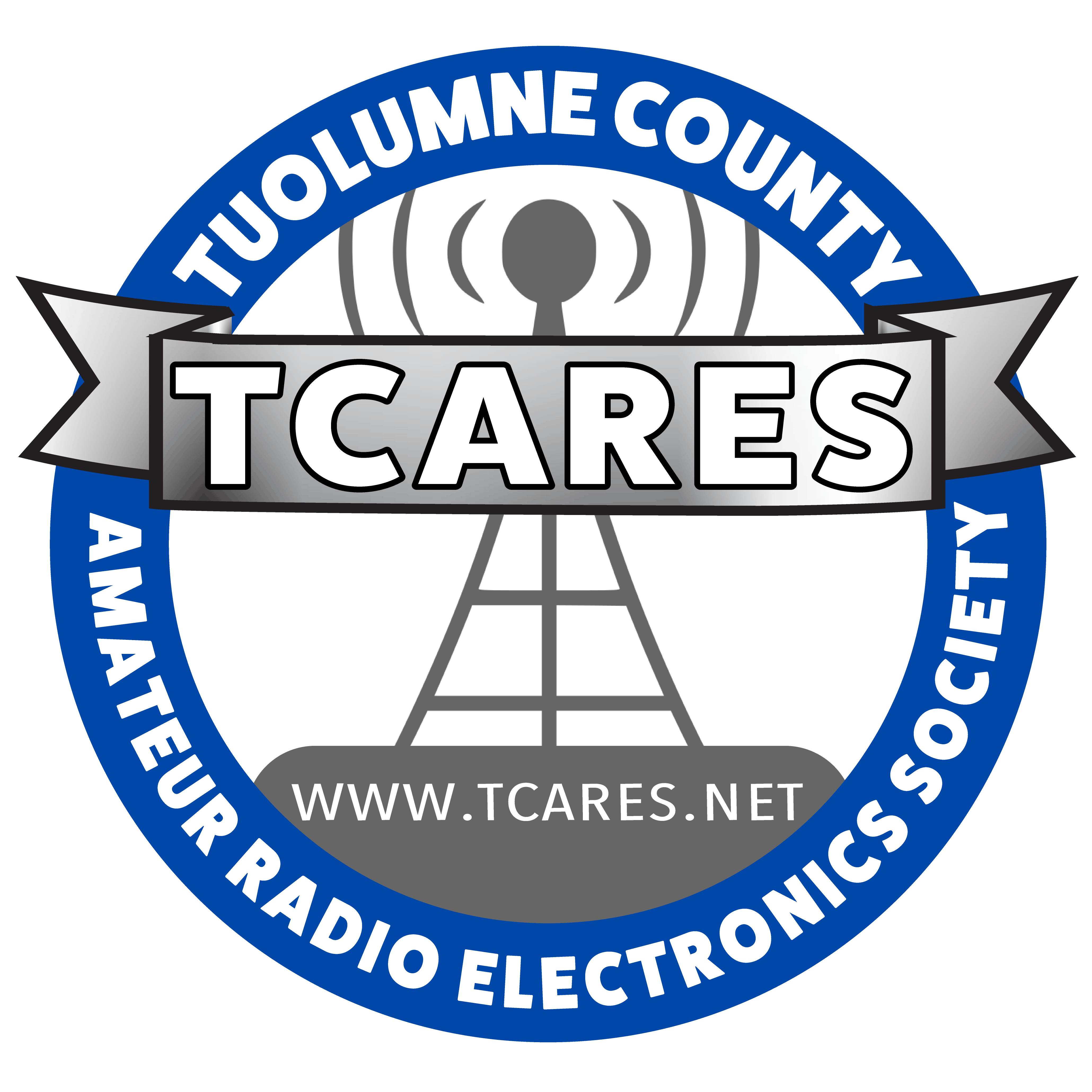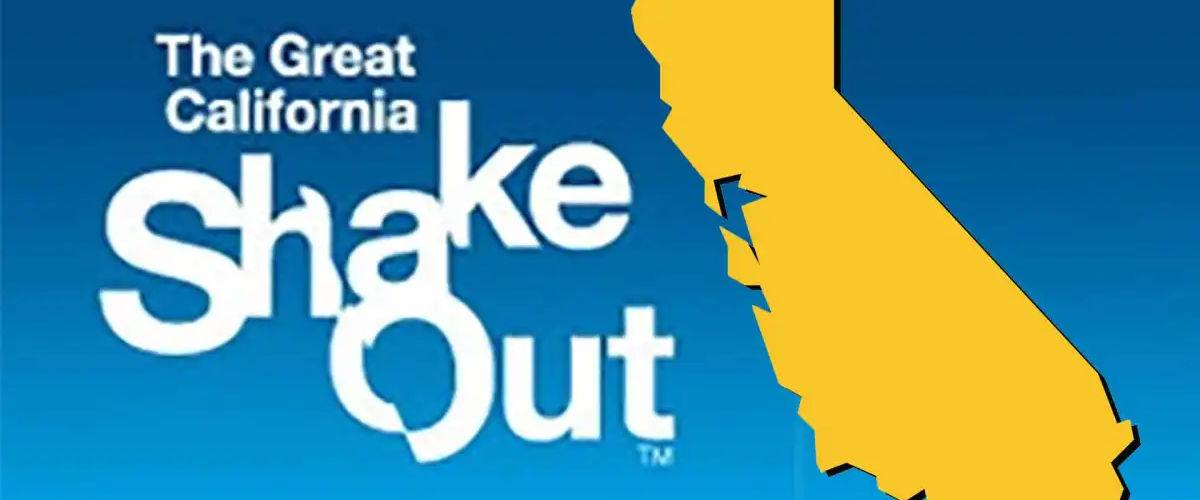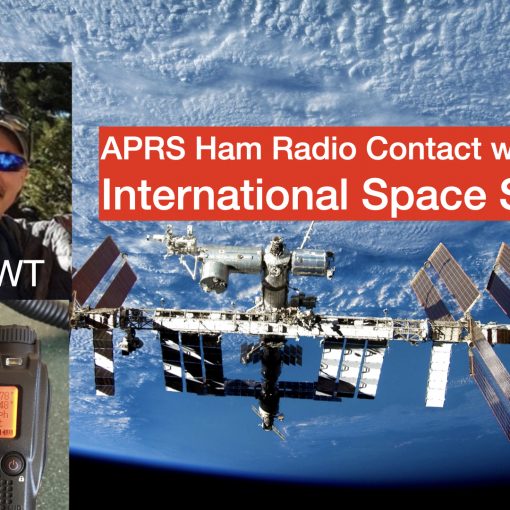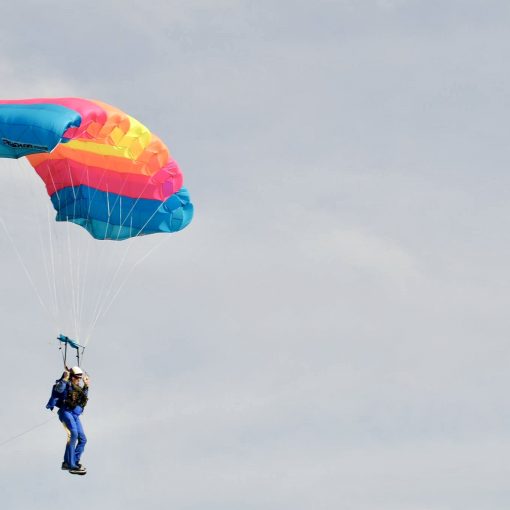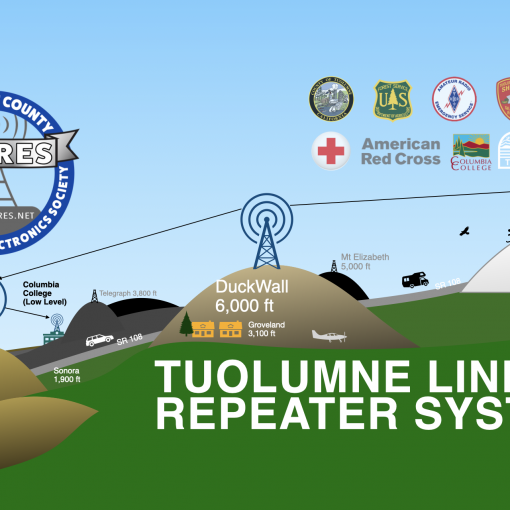TCARES members Rich Combs, KN6HSR; Ned Sudduth, K6NED, and Toni Sudduth, K6TNI, reported that the October 2023 Great California ShakeOut exercise was an “outstanding” success. Here is their story as reported to the ARRL News (11/03/2023):
K6NED / WRPM781
“This is a drill. Drop! Cover! Hold on!” was the mantra for the Great ShakeOut exercise on October 19, 2023, at 10:19 AM in Tuolumne County, California.
The Great ShakeOut is an annual international event that promotes awareness of how to prepare for and react to an earthquake. For the past 2 years, TCARES has used this event as an opportunity to test our ability to provide backup communication for the county public safety agencies. Considering that over the past year there have been two instances where primary communication systems went down — one due to a fire, and the other due to a damaged T1 fiber optic cable — this was a timely opportunity. It is a great chance to partner with first responder agencies, build trust, and develop awareness of mutual capabilities and needs.
There was an amateur radio operator stationed at the Tuolumne County Emergency Operations Center, which was operated by the Office of Emergency Services. After a preparatory simulated 5.0-magnitude San Francisco earthquake preamble at 10:19 AM, Ned Sudduth, K6NED, began taking check-ins from amateurs throughout the county with his wife Toni, K6TNI, who logged the reports. County Geographic Information System (GIS) staff loaded the real time of those hams on a map that was displayed on a TV. Tuolumne County is fortunate to have a backbone of four linked, 2-meter repeaters that cover almost the entire county.
There were 38 amateur radio operators providing reports on conditions throughout the county. In addition, we had four Neighborhood Radio Watch (NRW) communities using Family Radio Service radios, General Mobile Radio Service (GMRS) radios, and a few GMRS repeaters to add an additional 28 reports. Each NRW community has an embedded ham who monitors the NRW traffic, and then provides a summary to the Incident Commander during their check-in.
Considering it was a Thursday morning, we felt this was a great response. Participation increased from last year’s check-ins. Although Tuolumne is a large county by area, it has a population of just more than 55,000, and it is primarily rural and mountainous in character. Nonetheless, the combination of NRW communities with embedded ham radio operators and a robust repeater system has shown that even when the power and internet are down, first responder operations can continue to operate, and communities can immediately communicate and mobilize to help themselves. During the net, net control began by asking for regional checkins, Starting with the most remote corners of the county. Roll call was not conducted, but check-ins in small batches of three or four allowed for concise reporting with “yes” or “no” comments on the availability of grid power and telephone services. Most stations checking in had clear audio and delivered their local status professionally. Some stations learned they needed to make improvements. Stations at sites of interest, like schools or government buildings, were asked to state their affiliation with organizations like the Community Emergency Response Team, Search and Rescue, etc. Mobile units also checked in and made reports. Those in nearby counties checked in, too, and they reported their local situation reports.
Ideas for next year are already underway with plans to assign operators to specific locations like the local fairgrounds, hospital, Red Cross, fire stations, etc. The Automatic Packet Reporting System can also provide value next year with real-time location and status updates from mobile operators. Thanks to TCARES, the Tuolumne County Sheriff, the Office of Emergency Services, and GIS staff, and the radio operators who have made this an outstanding exercise for the last 2 years.
73, Ned, K6NED
